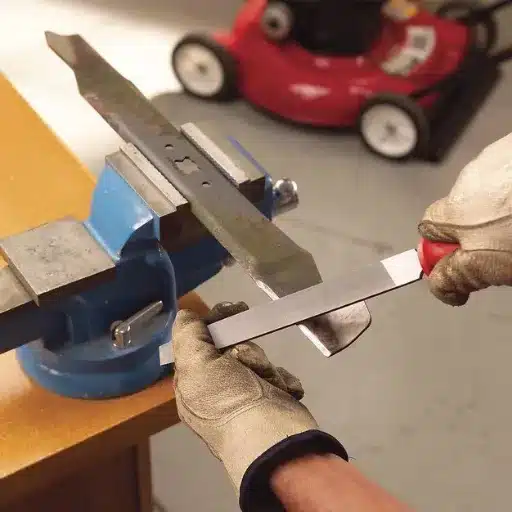Zinc plating is a common practice in the metal finishing sector encouraging the performance of a protective coat which also improves the surface of components. In this case, using a Zinc Plating Machine to coat the iron or steel parts with a thin layer of zinc is an effective way to prevent corrosion and damage from certain elements. The process is beneficial in the sense that zinc increases the lifespan of metal products and in most cases makes them appealing with a shiny surface. Today, we will discuss the basics of zinc plating, understanding the mechanism behind zinc plating, its benefits, and the industries in which it is used. This could be useful to manufacturers, engineers and everyone interested in metal protection methods alike.
How Does the Zinc Plating Process Work?

What Is the Importance of the Zinc Anode in the Plating Process?
With regards to zinc plating, the zinc anode is important in contributing zinc ions that can be deposited on the metal surface. Zinc ions, which originate from the zinc anode, travel to the metal part that is the cathode during electroplating of the cathode through liquid electrolyte. This enables formation of a zinc coating on the surface , which protects the surface from corrosion.
Describe the Contribution of Electroplating to Zinc Plating Process?
Electroplating is relied on in the zinc plating process since an electric current assists in the transfer of zinc ions from the solution onto the surface of the metal. It also helps in depositing zinc uniformly and consistently over the surface of the metal, forming a strong protective layer against environmental and corrosive elements and enhancing the usefulness of the plated part and its life.
What Is a Plating Bath and How Is It Used?
The plating bath can be defined as a solution that is rich in chemicals together with ionic zinc which is essential for the electroplating process. In this view, it can be understood as the very solution through which the electric current passes so as to move zinc ions towards the metal surface. The bath solution is controlled in concentration, temperature and pH in order to ensure an effective and uniform zinc deposition onto the metal part manufacturer.
What Are the Benefits of Zinc Plating?

How does it Protect Against Corrosion?
Corrosion is the greatest threat posed to any metal surface and zinc plating works by creating a sacrificial layer on the upper area of the metal. The upper coating acts as an oxidizing element that gets corroded instead of allowing the base layer to deteriorate. Furthermore, this zinc wash is capable of some galvanic action healing minor scratches or imperfections thus enhancing the protection of the metallic part.
Why Is Rust Resistance Important?
The importance of rust resistance is that it increases the life and utility of the metal parts subjected to the elements as well the rust tends to protect those parts from further corrosion. The absence of rust resistance means metals would corrode rather quickly, causing decay of structures, breakdown of components, and expending resources on fixing or replacing them. Industries can enhance the longevity and reliability of products by implementing rust-resistant measures like zinc-plating.
What Role Does Chromate Conversion Coating Play?
Chromate conversion coating improves zinc plated areas due to a protective film which operates as a barrier against environmental elements. Besides, apart from making the zinc layer more corrosion-resistant, this coating also improves the adhesion of applied paints or finishes, which justifies its necessity as the last and decisive stage in the plating process aimed to provide comprehensive protection and greater lifetime.
Why Is Zinc Plating Used in Industry?

How Does It Define Metal Coatings?
A zinc coating provides a barrier that prevents moisture and air from coming into contact with the metal form, thereby protecting it from environmental factors. This coating prevents any oxidation or corrosion of the underlying metal. Most metals have more electrochemical potential than zinc; hence zinc is used as a sacrificial anode. It will corrode before the steel does, thus protecting the metal surfaces underneath. Finally, minor injuries are repaired by the galvanic action of the zinc layer, which provides additional protection to the metal parts over long periods.
Zinc plating is recommended for which types of fasteners?
Certain fasteners for example, bolts, nuts, screws and washers are good candidates for zinc plating. Zinc coating protects these components from corrosion, increases the longevity of these components and provides dependability of the end parts in such diverse sectors as automotive, construction or electronic. This is particularly useful for rust prone fasteners designed for applications in moist and wet conditions.
What Do Zinc Coated Products Include?
Zinc plating is done on construction materials like brackets, clamps, and fittings; automotive parts such as brake lines; automotive fuel delivery systems; and a wide range of electric and electrical appliances. Such products have a zinc coating due to the lower possibility to rust providing better resistance over other materials and therefore improving functionality over diverse conditions.
What Are the Different Plating Methods?

Zinc Plating Application for Different Workpieces: Mechanical characteristics of both rack and barrel zinc plating
Two distinct methods, barrel plating and rack plating, are used in zinc plating, both of which have their advantages and limitations depending on the workpiece. Parts are attached to restraints called “cathodes” that provide support for devices during the plating process in rack plating. The process is effective for larger complex or shape-sensitive items since it provides proper coverage while also reducing the potential of damage or distortion. In contrast, barrel plating puts smaller parts within a rotating barrel so there is free tumbling of the parts in the electrolyte plating solution. It is more suited for mass processing of small components but it will result in a less even coating with all its excessive smearing and also more contact marks than rack plating.
What Is Alkaline Zinc Plating ?
As per the name, alkaline zinc plating is a zinc electroplated coating obtained utilizing an alkaline non-cyanide solution. This process is well known for producing a bright and even coating, which has excellent corrosion resistance. It is especially useful for plating parts with complex geometries, as it offers better thickness distribution than acid plating. As a result, if a part has an intricate design or requires a good consistent finish, alkaline zinc plating will be very much suitable.
How Is the Process Controlled by the Composition of the Plating Solution?
The quality and characteristics of zinc plating process is highly dependent on composition of the plating solution. The components of the zinc ions concentration solution, and any additives, the pH of the solution, for examples all these parameters can influence the uniformity, brightness, and corrosion resistance of the coatings. For example, an acid solution may produce a high deposition rate for the coatings, whereas, an alkaline solution may improve the coverage of protrusions on intricate components. Such parameters of the composition of the plating solution are usually adjusted to meet the requirements of the coated parts.
What Are the Challenges in Zinc Plating?

What Do You Mean By Hydrogen Embrittlement and Is It A Problem?
Hydrogen embrittlement refers to a mechanism that leads to the loss of ductility and causes cracks to develop in metals as a result of hydrogen adsorption. This is particularly problematic in the case of zinc plating since hydrogen may be provided during the acid cleaning or electroplating processes. In order to prevent hydrogen embrittlement, a baking treatment is usually applied within a short period of time following plating. This practice of heat treatment allows hydrogen to be evacuated from the metal, thereby lowering the chance of disintegration during military operations.
How does the Density of Current affect the Quality?
The density of electric current is very important as regards zinc plating. The current density that is higher than necessary can produce a more adhesive, brighter, and thicker coating but can cause things like burning or pitting of the surface. High current density, on the other hand, will usually yield finer and more pleasingly smooth surfaces though the plating rates may be slower and less bright. It is of utmost importance to achieve the required current density which controls deposition rate, coverage and appearance in order to achieve consistent and good quality zinc coatings.
How to Maintain a Uniform Zinc Coating?
A constant zinc layer thickness can be achieved only by looking after and controlling certain indispensable goldsmithing parameters during the zinc plating process. The most important are the current density, and the temperature and composition of the bath. There are also operational means of controlling the average level microns. The culture of the process itself is also helpful in achieving uniform thickness distribution of the plating on the specimens, one of which is the care of the surface of the respective specimens before plating is undertaken.
Reference sources
-
American Galvanizers Association – Zinc Plating
-
Lincoln Industries – What is Zinc Plating, and What Are the Benefits?
-
Activar Construction Products Group – Benefits of Zinc-Coated Metal
Frequently Asked Questions (FAQs)
Q: What is zinc plating, and why is it used? Why exactly is it applied?
A: Zinc plating, also called as galvanizing, is a metal coating for the enhancement of prevention of rust and corrosion. The process is employed across different sectors as it benefits in improving metal parts’ durability.
Q: What is the process of zinc plating?
A: Zinc plating process involves submersion of the metallic component into a solution containing zinc ions. When a current passes, the coating of zinc is deposited onto the surface of the metal, which protects it from the environment.
Q: There are other plating options available, what is it that makes zinc plating a better choice for all?
A: One of the most evident reasons why there is a preference for zinc plating is that it relatively cheaper enhances and corrosion resistance properties, moreover it is very attractive. It also has plaustibility for small parts and has many applications in the automotive and construction industry.
Q: Which approaches have been used to carry out zinc plating?
A: The more popular techniques of coating zinc metal onto surfaces include rack and barrel plating methods. Rack plating is employed in the deposition of larger components whereas barrel plating is applicable for smaller parts and mass deposition. Each of the techniques has their own benefits in ensuring that the zinc layer is properly attached to the metal surface.
Q: In which areas industrial sectors zinc plating services are applied?
A: Zinc plating services are mostly utilized in automotive, construction, and other manufacturing industries. It is a critical process in these businesses because zinc plating adds value to metal parts by improving their usefulness as well as their aesthetics.
Q: How does zinc plating compare to zinc-nickel plating?
A: Both processes involve applying a protective zinc layer, however, a zinc-nickel plating consists of zinc and nickel alloy which provide better durability and corrosion protection than regular zinc plated parts. Because of this, zinc-nickel plating is recommended for applications where more aggressiveness is required.
Q: Is zinc plating applicable in the metal finishing for aesthetic purposes?
A: Yes, this is true. The application of zinc plating can enhance the overall appearance of a finished product. An appealing shine can be created through the process without compromising the protection of the component, and a zinc coating is applied.
Q: How would you explain the impact of the coating weight on the efficiency of a zinc coating?
A: The efficiency of the coating is proportional to the thickness of the coating applied. Generally, thicker coating offers better corrosion protection which makes them effectively used in more aggressive environments.










